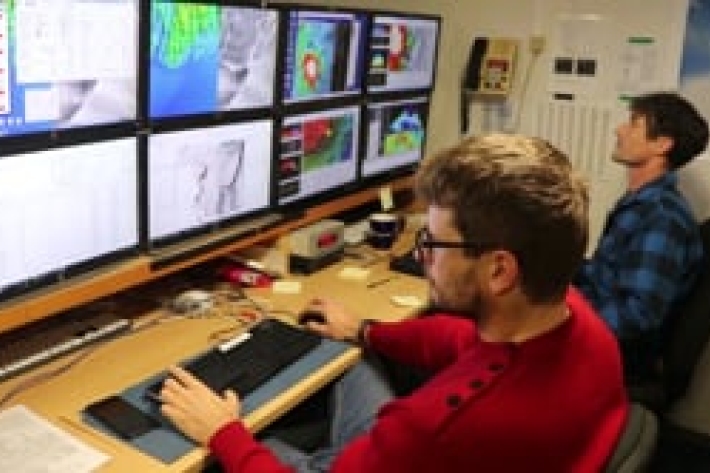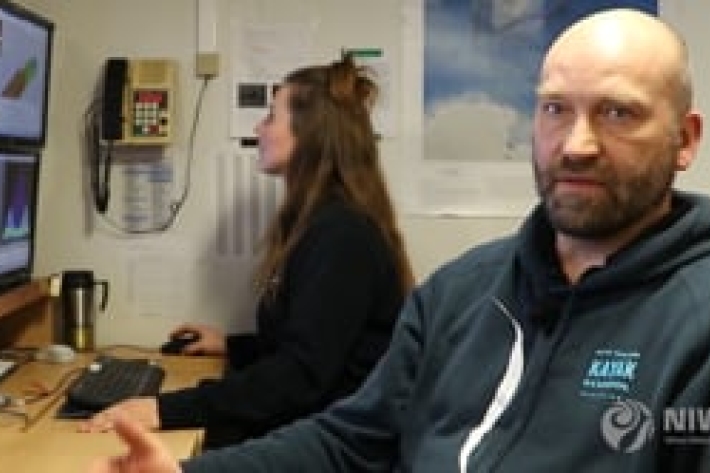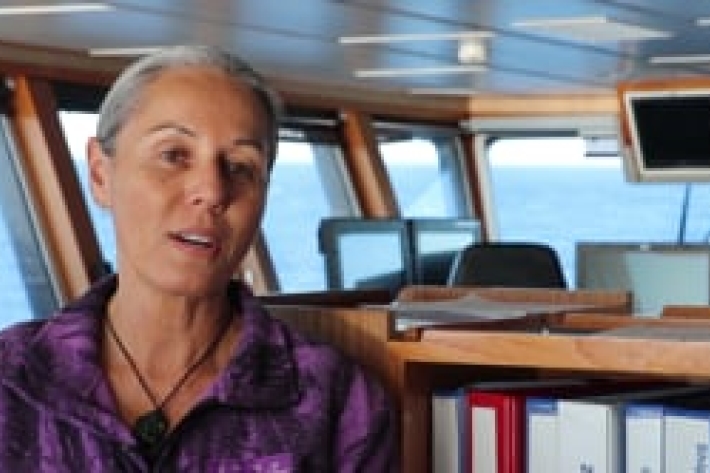-

What's in the water around Whakaari/White Island?
2020 - Bay of Plenty acoustics
-

Can sound be used to characterise gas composition in the water column?
Underwater gas bubbles acoustic monitoring and seabed mapping around Whakaari Island -

A flair for finding gas bubble flares
NIWA marine geologist Arne Pallentin is looking for telltale gas bubble 'flares"—using a multibeam echosounder—that indicate new volcanic activity in the Calypso Vent Field. -

Rust coding
Feature story28 July 2020Campbell Gardiner explains how hundreds of lines of computer code generated each week are helping biosecurity authorities keep a close eye on a plant pathogen. -

Tracking our ocean wanderers
Feature story28 July 2020Albatrosses may be masters of the skies, but they are surprisingly vulnerable on the water. Campbell Gardiner talks to two scientists working to keep these magnificent seabirds airborne. -

Getting the taste for kingfish
Feature story28 July 2020This award-winning kingfish sashimi dish is creating quite a splash – but it doesn’t come from the sea. We look at NIWA’s latest aquaculture success story and the new opportunities it’s on path to deliver. -

Fresh thinking – new solutions
Feature story28 July 2020Getting tangled up in seaweed or using supercomputers to unravel climate change – NIWA scientists go to great lengths to find fresh answers. -

Science helps shape the fightback
Feature story28 July 2020NIWA’s Chief Executive John Morgan looks at the role science will play in New Zealand’s post-Covid recovery. -

A cold day in the office
Feature story28 July 2020Five specialist NIWA divers were left ‘gasping’ during their recent plunge under the ice near Scott Base. -

Building pathways
Feature story28 July 2020It has been a whirlwind first six months for Ngāpera Keegan and Tekiteora Rolleston-Gabel, the first two young researchers in NIWA’s newly established Māori Graduate Internship Programme. -

Locked down, but breathing freely
Feature story28 July 2020Some of the most striking images of lockdown around the world have been the blue skies of cities ordinarily choking in smog. From New Delhi to Los Angeles, Beijing to Paris, the changes were so remarkable they were visible from space. -

Dr Kura Paul-Burke returns to Whakaari
"For us, Whakaari is our whaea, she is our tupuna, and also a place of our mahinga kai. I didn't realise how much I'd missed her..."
